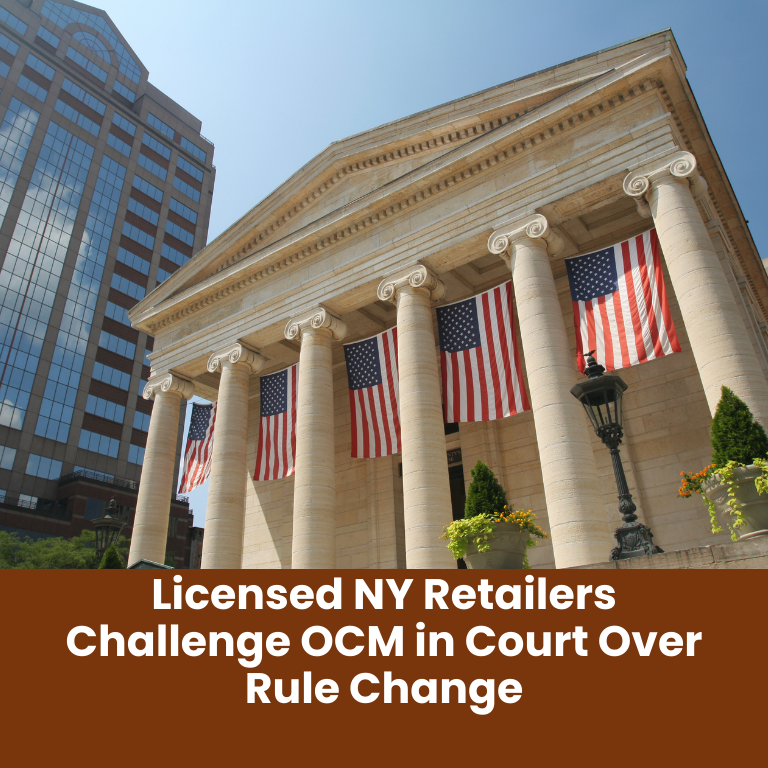Adult Use Marijuana Sales in Ohio Surpass $600 Million, Doubling Medical Market Revenue
Ohio’s Recreational Cannabis Market Reaches Major Milestone Less Than a Year After Launch
Less than a year after Ohio launched its adult-use marijuana market, the state has already recorded over $600 million in sales, according to new data reported by Columbus-based WCMH. This landmark figure not only highlights the rapid adoption of recreational cannabis in the state but also signals a shift in consumer preferences, with adult-use sales now doubling those of the medical marijuana (MMJ) market.
Adult-Use Outpaces Medical Marijuana With Daily Sales Nearly Double the MMJ Market
Since recreational sales officially began on August 6, 2024, adult-use dispensaries across Ohio have been averaging approximately $1.8 million in daily sales. In contrast, medical marijuana dispensaries have averaged around $925,000 per day since the medical program began operating six years ago.
The disparity is significant: adult-use marijuana is now generating nearly twice the revenue on a daily basis. That dynamic has played out across a growing network of dispensaries now authorized to serve both medical patients and recreational users.
Statewide Expansion Through Dual Use Dispensaries
Currently, Ohio boasts 153 licensed “dual-use” outlets, which are permitted to sell both recreational and medical cannabis. These existing medical marijuana dispensaries were the first to transition into recreational sales when the adult-use market went live in August 2024.
This dual-use strategy allowed for a relatively smooth rollout of recreational cannabis across the state, leveraging infrastructure that was already in place while regulators worked to establish guidelines for new entrants to the market.
Annual Sales Projections Show Dominance of Recreational Cannabis
According to projections from the MJBiz Factbook, adult-use marijuana sales in Ohio are expected to reach $650 million in 2025. In contrast, medical marijuana sales are forecasted to hover around $481 million.
These numbers suggest that recreational cannabis is poised to become the dominant force in Ohio’s marijuana market in both volume and value. This trend mirrors developments in other states where medical programs have given way to broader adult-use markets that appeal to a wider consumer base.
Social Equity Licensing Delays Raise Concerns Among Advocates and Entrepreneurs
Despite the rapid growth in sales, progress on expanding Ohio’s cannabis licensing framework has hit a roadblock. A planned marijuana social equity program designed to distribute new permits more fairly has stalled, according to a recent report by The Columbus Dispatch.
Social equity initiatives in cannabis are typically designed to provide opportunities for individuals and communities historically impacted by marijuana prohibition. Delays in implementing these programs have drawn criticism from advocates who argue that equitable participation is essential to a just and inclusive cannabis industry.
Lawmakers Fail to Act on Hemp Derived THC Regulations Before Summer Recess
As the adult-use cannabis market booms, both marijuana industry stakeholders and state lawmakers remain increasingly concerned about unregulated sales of intoxicating hemp-derived products—specifically those containing delta-8 and delta-9 THC.
Efforts to regulate these substances through new legislation failed before Ohio lawmakers went on their summer break. A proposed bill aimed at restricting sales of intoxicating hemp products to licensed cannabis retailers did not pass, leaving what some consider a dangerous loophole in the state’s cannabis framework.
Industry Leaders Call for Stronger Public Health Protections
Leaders in the cannabis sector are voicing concern over the lack of regulatory controls around intoxicating hemp-derived products. Without stronger oversight, these products—often sold in gas stations, convenience stores, and online—could undermine consumer safety and the integrity of the legal cannabis industry.
“While we would have hoped for stronger safeguards around intoxicating hemp products, we remain optimistic that Ohio’s regulatory approach will continue to evolve in the best interest of public health and consumer safety,” said Jason Vedadi, CEO of Story Cannabis, in an interview with WCMH.
Balancing Growth With Regulation in a Rapidly Evolving Market
Ohio’s adult-use marijuana market is among the fastest-growing in the nation. But the state faces an increasingly common challenge: how to responsibly manage that growth while ensuring fair access, consumer protection, and regulatory clarity.
With social equity licensing programs on hold and intoxicating hemp products still widely available outside the regulated market, questions remain about how Ohio will balance industry expansion with public health and social justice priorities.
The Road Ahead for Ohio’s Cannabis Industry
Looking forward, Ohio’s cannabis sector has both opportunities and challenges on the horizon. The momentum behind recreational sales is undeniable, with revenues rapidly eclipsing those from the medical program. But in order to build a robust and equitable market, state lawmakers and regulators will need to revisit stalled policy issues around licensing and product safety.
As Ohio heads into 2026, industry insiders and consumers alike will be watching closely for legislative movement, especially around social equity and hemp-derived product regulations. For now, though, the numbers tell a clear story: cannabis is big business in Ohio and it’s only getting bigger.
OG source












